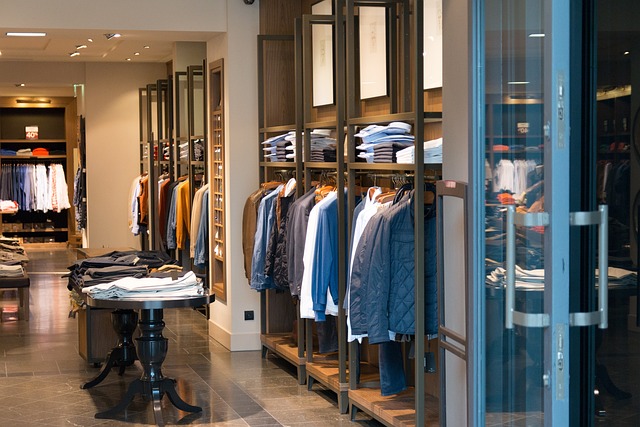By Julie Tilenius, President of TrueSource
Working in the retail sector hasn’t exactly been a walk in the park lately. Retailers are facing many challenges this year from uncertain economic conditions to a shortage of workers, rising costs, consumer behavior shifts, market saturation and supply chains under pressure. After a turbulent few years, many are struggling to meet customer expectations and keep them coming back for more. Especially as online shopping continues its dominance, brick and mortar retailers are looking into every opportunity to keep their stores busy and deliver a top-notch experience for their customers.
However, in that desire to drive foot traffic retail leaders can sometimes lose sight of the needs of those already in their stores. In my experience supporting more than half of the top 100 retailers in the country, I’ve seen first hand how proactive, thoughtful operations can make or break a store’s success. Brick and mortar retailers have a unique opportunity to support a memorable, engaging customer experience with immediate gratification and instant feedback.
Here is how retailers can maximize existing foot traffic during the slow season by differentiating themselves and focusing on the small, often-overlooked details:
Keep stores in squeaky clean condition. When foot traffic is already slower than usual, the last thing you want is to discourage potential customers with a dusty, dingey space. Cleanliness is a critical piece of safety and liability, and with customers able to quickly take pictures of your space to share, word can spread quickly if things are less than ideal. Key things to keep in mind include keeping shelves and other surfaces dusted, floors swept and mopped, windows and glass displays smudge-free, and counters wiped down. This is a lengthy list, and it’s only the start. Creating a reputation of cleanliness means leaving no stone unturned and focusing on those details many might miss. Maintaining this level of cleanliness can be intensively time-consuming, so considering outsourcing some of this work to an external partner can be a great option for when your location gets busier.
Ensure efficient staffing. Each member of your retail team was hired for their customer service and sales skills, not their ability to clean restrooms or dust countertops. They should be free to anticipate customer needs and attend to them before being asked, and that level of attention is lost when they become saddled with responsibilities outside that customer-focused sphere. Your goal as a retail leader should be to empower them to focus on top-tier customer interactions and keeping those cleaning tasks off their plate if needed. Looking into national and regional services to support these functions is a great place to start. These groups can attend to maintenance issues, conduct deep cleanings, and schedule services to prevent operational issues in the future. While you have time to plan for the future, taking the time to vet and partner with these types of providers can go a long way in ensuring a positive customer experience and a staff that can focus on executing the highest level of care.
Keep doors welcoming. The doors are your customer’s first interaction with your space, and you want to make sure you leave a positive impression. They should most importantly be easy to open, and scheduling routine maintenance checks should keep them in welcoming shape. Routine checks can ensure hinges are smooth and any sensors are working correctly. From a day-to-day perspective, doors should be smudge-free, non-creaky, and frequently sanitized if they have handles. A future-motivated perspective is essential in avoiding situations where eager customers can’t get into your space.
Remember lighting and temperature. A welcoming retail environment goes beyond cleanliness and smiling faces. When it comes to the overall impression customers create of your location, temperature and lighting are sometimes overlooked or not given proper attention. There’s nothing like a flickering lightbulb to give a space the feel of an abandoned location horror movie, and lighting that doesn’t showcase your products properly can contribute to dipping sales. The temperature of your space also needs to make sense based on your geography and weather patterns – a comfortable temperature is the ultimate invitation to come in and stay a while when the outside is unbearable.
Find productive ways to use your time. A slower season is the best time to tackle long-term projects that are perpetually pushed aside when the store is busy. This can include organizing backstock, keeping less-frequented areas of the store properly dusted, or honing in on your merchandising strategy. There is always something you can be doing to improve the retail experience for your customer or find ways to make the job easier for your staff. As a customer, these efforts show up as quick service finding requested items, clean and tidy items, and the item you didn’t know you needed greeting you at the entrance. The true superstar retail managers know this period of slower traffic is just the starting block for success when that foot traffic returns.
Retail managers have a choice when they enter periods of slower foot traffic – sit by idly, or create a plan for success when customers come back. Some forces are outside of your control, but focusing on improving the things you can will make the difference in creating a prosperous location. With the right attention to detail during your slower seasons, you can lay the groundwork to maximize the experience for all your customers with strategies that capture their attention, encourage purchases, foster repeat visits and build connection.
About the author
 Julie Tilenius is president of TrueSource, an OnPoint Group Company, a partner to more than half of the U.S. top 100 retailers nationwide and the first call for retailers and property managers in need of critical facility maintenance.
Julie Tilenius is president of TrueSource, an OnPoint Group Company, a partner to more than half of the U.S. top 100 retailers nationwide and the first call for retailers and property managers in need of critical facility maintenance.
Related Articles

The New Frugality: How Inflation and Tariffs Are Reshaping Consumer Spending
One of the most telling shifts is how shoppers approach decision-making. Where convenience once dominated, consciousness now plays a larger role. People are researching more before making a purchase, comparing prices across multiple platforms, and questioning whether they really need the product in the first place.

Embracing new concepts vs the return to brick-and-mortar
Balancing the return to physical retail and the development of new technologies to enhance customer experience and drive operational efficiency for long-term success.
Enartis to Acquire Parsec in Winemaking and Retail Deal
The deal will bring Enartis and Parsec together to help wineries manage every part of production more easily and efficiently, from grape to bottle.

A Practical Guide to Retail AI Use Policies for Retailers and HQ Teams
AI can bring new opportunities for retailers, but this innovation must come with responsibility.


 for the latest news and job opportunities in retail tech
for the latest news and job opportunities in retail tech 